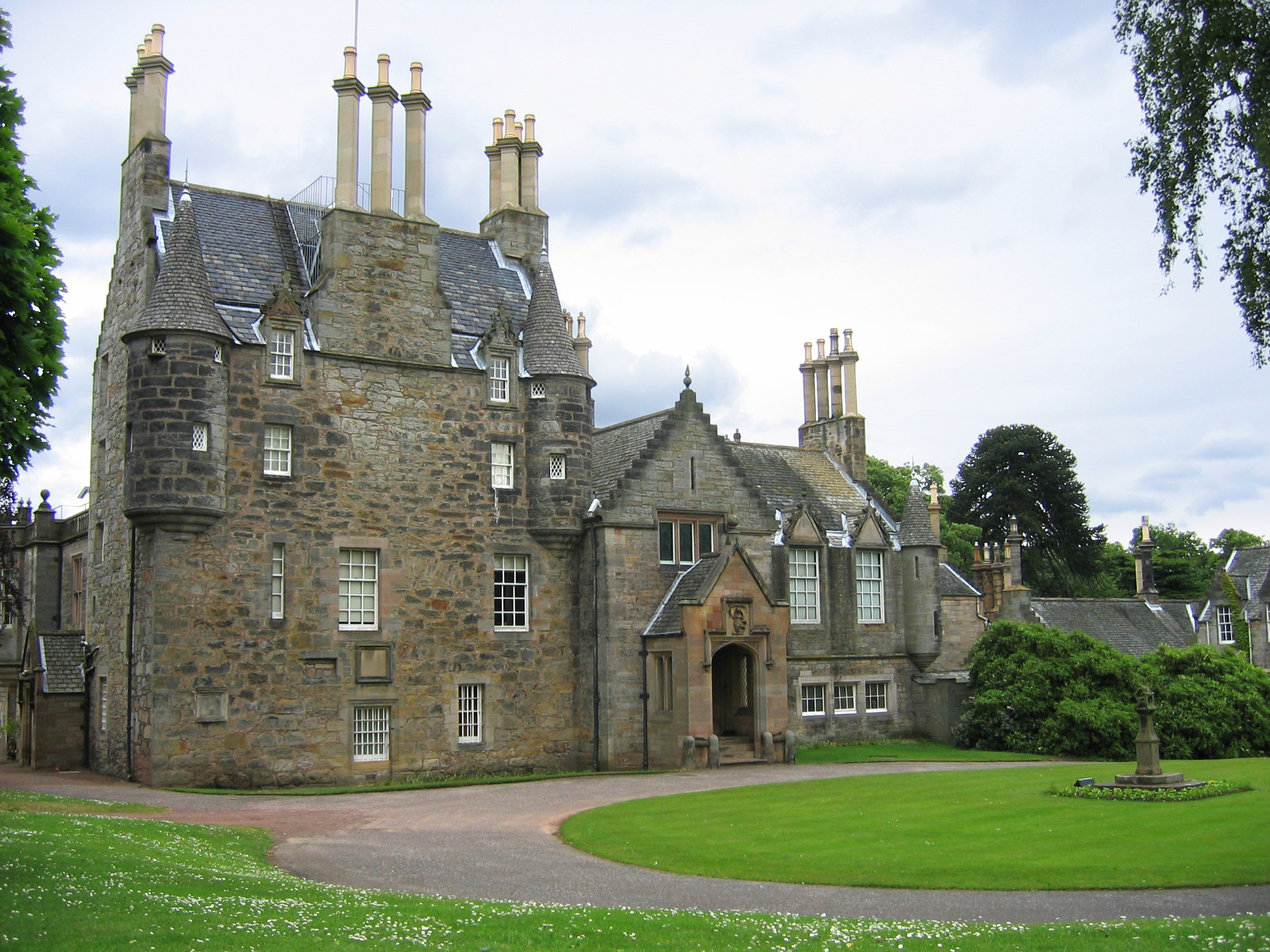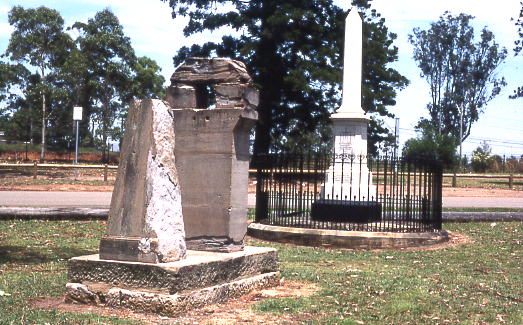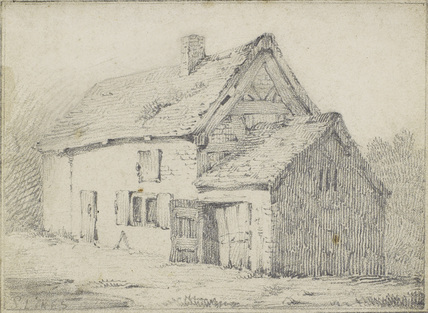|
John Watson Gordon
Sir John Watson Gordon (1788 – 1 June 1864) was a Scottish portrait painter and president of the Royal Scottish Academy. Life and work Gordon was born John Watson in Edinburgh, the eldest son of Captain Watson, R.A., a cadet of the family of Watson of Overmains, in the county of Berwick. He was educated specifically to prepare him for enrolling in the Royal Engineers. He entered as a student in the government school of design, under the management of the Board of Manufactures. he showed a natural aptitude for art, and his father was persuaded to allow him to adopt it as his profession. Captain Watson was himself a skilful draughtsman, and his brother George Watson, afterwards president of the Royal Scottish Academy, was a highly respected portrait painter, second only to Sir Henry Raeburn, who was a friend of the family. In 1808 Gordon exhibited a picture "The Lay of the Last Minstrel" at the Lyceum in Nicolson Street, Edinburgh – the first public exhibition of paintings ... [...More Info...] [...Related Items...] OR: [Wikipedia] [Google] [Baidu] |
Sir John Watson Gordon By Patric Park, SNPG
''Sir'' is a formal honorific address in English for men, derived from Sire in the High Middle Ages. Both are derived from the old French "Sieur" (Lord), brought to England by the French-speaking Normans, and which now exist in French only as part of "Monsieur", with the equivalent "My Lord" in English. Traditionally, as governed by law and custom, Sir is used for men titled as knights, often as members of orders of chivalry, as well as later applied to baronets and other offices. As the female equivalent for knighthood is damehood, the female equivalent term is typically Dame. The wife of a knight or baronet tends to be addressed as Lady, although a few exceptions and interchanges of these uses exist. Additionally, since the late modern period, Sir has been used as a respectful way to address a man of superior social status or military rank. Equivalent terms of address for women are Madam (shortened to Ma'am), in addition to social honorifics such as Mrs, Ms or Miss. Etymolo ... [...More Info...] [...Related Items...] OR: [Wikipedia] [Google] [Baidu] |
David Brewster
Sir David Brewster KH PRSE FRS FSA Scot FSSA MICE (11 December 178110 February 1868) was a British scientist, inventor, author, and academic administrator. In science he is principally remembered for his experimental work in physical optics, mostly concerned with the study of the polarization of light and including the discovery of Brewster's angle. He studied the birefringence of crystals under compression and discovered photoelasticity, thereby creating the field of optical mineralogy.A. D. Morrison-Low (2004) "Brewster, Sir David (1781–1868)" in ''Oxford Dictionary of National Biography'' For this work, William Whewell dubbed him the "father of modern experimental optics" and "the Johannes Kepler of optics." A pioneer in photography, Brewster invented an improved stereoscope, which he called "lenticular stereoscope" and which became the first portable 3D-viewing device. He also invented the stereoscopic camera, two types of polarimeters, the polyzonal lens, the li ... [...More Info...] [...Related Items...] OR: [Wikipedia] [Google] [Baidu] |
Painter And Limner
The Painter and Limner is a member of the Royal Household in Scotland. Appointments of Court Painters are recorded from 1581 onwards, and the post of Painter and Limner was created in 1702 for George Ogilvie. The duties included "drawing pictures of our he Monarch'sperson or of our successors or others of our royal family for the decorment of our houses and palaces". From 1723 to 1823 the office was a sinecure held by members of the Abercrombie family, not necessarily connected with artistic ability. The appointment of Sir Henry Raeburn in 1823, a few months before his death marked a return to conferring the post on a distinguished Scottish artist. He was succeeded by David Wilkie. From 1841 until 1932, the salary attached to the office was £100. Since 1932 the appointment has been unpaid and there has been no requirement for the holder to produce works for either the monarch or the state. Until 1864 appointments were made by commission under the Privy Seal. Since 1908 appoint ... [...More Info...] [...Related Items...] OR: [Wikipedia] [Google] [Baidu] |
John Shaw-Lefevre
Sir John George Shaw Lefevre KCB (24 January 1797 – 20 August 1879) was a British barrister, Whig politician and civil servant. Life Shaw Lefevre was the son of Charles Shaw Lefevre by his wife Helen, daughter of John Lefevre. Charles Shaw-Lefevre, 1st Viscount Eversley, was his elder brother. He was educated at Trinity College, Cambridge, where he was Senior Wrangler in 1818, and was called to the Bar, Inner Temple. He was elected a Fellow of the Royal Society in 1820. He was returned to Parliament for Petersfield in December 1832, but was unseated on petition in March 1833. He served under Lord Grey as Under-Secretary of State for War and the Colonies in 1834. The latter year Shaw Lefevre was appointed a Poor Law Commissioner after the passing of the Poor Law Amendment Act, which he remained until 1841. Between 1856 and 1875 he served as Clerk of the Parliaments. He also helped found the University of London and served as its Vice-Chancellor for many years. He was ma ... [...More Info...] [...Related Items...] OR: [Wikipedia] [Google] [Baidu] |
Andrew Rutherfurd, Lord Rutherfurd
The Right Hon. Andrew Rutherfurd, Lord Rutherfurd, (born Andrew Greenfield; 21 June 1791 – 13 December 1854) was a Scottish advocate, judge and politician. Early life Rutherfurd was born at Bristo Port (near Greyfriars Kirkyard) in Edinburgh on 21 June 1791 to Janet Rutherfurd Bervie, and Reverend William Greenfield. In 1799, after his father was disgraced in a sex scandal, the family changed their name to Rutherfurd, his maternal grandmother's maiden name. His main house was Lauriston Castle near Cramond just north-west of the city. His sister married John Gordon FRSE, father of John Thomson Gordon FRSE. He was educated at the High School in Edinburgh then studied law at the University of Edinburgh. He became an advocate in 1812. Career In the 1830s he is listed as an advocate living at 9, St Colme Street, on the Moray Estate in Edinburgh's west end. His house was remodelled by William Notman in 1835, whilst working in the offices of William Henry Playfair. He was appo ... [...More Info...] [...Related Items...] OR: [Wikipedia] [Google] [Baidu] |
Henry Cockburn, Lord Cockburn
Henry Thomas Cockburn of Bonaly, Lord Cockburn ( ; Cockpen, Midlothian, 26 October 1779 – Bonaly, Midlothian, 26 April/18 July 1854) was a Scottish lawyer, judge and literary figure. He served as Solicitor General for Scotland between 1830 and 1834. Background and Education His mother Janet Rannie was as sister-in-law of the influential Henry Dundas, 1st Viscount Melville, Lord Melville, through her sister Elizabeth, and his father, Archibald Cockburn, was Sheriff of Edinburgh, Sheriff of Midlothian and Baron of the Court of Exchequer (Scotland), Court of Exchequer. He was educated at the Royal High School (Edinburgh), Royal High School and the University of Edinburgh. His brother, John Cockburn FRSE (died 1862), was a wine merchant and founder of Cockburn's of Leith. Literary career Cockburn contributed regularly to the ''Edinburgh Review''. In this popular magazine of its day he is described as: "rather below the middle height, firm, wiry and muscular, inured to active ex ... [...More Info...] [...Related Items...] OR: [Wikipedia] [Google] [Baidu] |
John Murray, Lord Murray
Sir John Archibald Murray of Henderland, Lord Murray, FRSE (1778–1859) was a Scottish judge and Senator of the College of Justice. Life He was born in Midlothian on 8 June 1778, the second son of Alexander Murray, Lord Henderland, Lord of Session and Justiciary. His mother was Katherine Lindsay, daughter of Sir Alexander Lindsay of Evelick (nobleman), Alexander Lindsay of Evelick, Perthshire, and a niece of the first Lord Mansfield. His brother was William Murray of Henderland FRSE. Murray was educated successively at the Edinburgh High School, at Westminster School, and at the University of Edinburgh. At Edinburgh he was a member of the Juvenile Literary Society, of which Henry Brougham, 1st Baron Brougham and Vaux, Henry Brougham and Francis Horner were the leading spirits, and of the Speculative Society. He corresponded with Horner, till the latter's death in 1817, and his letters form a major part of the ''Memoirs of Horner,'' 1843. In 1799, Murray passed to the Scottis ... [...More Info...] [...Related Items...] OR: [Wikipedia] [Google] [Baidu] |
Thomas Babington Macaulay, 1st Baron Macaulay
Thomas Babington Macaulay, 1st Baron Macaulay, (; 25 October 1800 – 28 December 1859) was a British historian and Whig politician, who served as the Secretary at War between 1839 and 1841, and as the Paymaster-General between 1846 and 1848. Macaulay's '' The History of England'', which expressed his contention of the superiority of the Western European culture and of the inevitability of its sociopolitical progress, is a seminal example of Whig history that remains commended for its prose style. Early life Macaulay was born at Rothley Temple in Leicestershire on 25 October 1800, the son of Zachary Macaulay, a Scottish Highlander, who became a colonial governor and abolitionist, and Selina Mills of Bristol, a former pupil of Hannah More. They named their first child after his uncle Thomas Babington, a Leicestershire landowner and politician, who had married Zachary's sister Jean. The young Macaulay was noted as a child prodigy; as a toddler, gazing out of the window f ... [...More Info...] [...Related Items...] OR: [Wikipedia] [Google] [Baidu] |
Edward VII
Edward VII (Albert Edward; 9 November 1841 – 6 May 1910) was King of the United Kingdom of Great Britain and Ireland and Emperor of India, from 22 January 1901 until his death in 1910. The second child and eldest son of Queen Victoria and Prince Albert of Saxe-Coburg and Gotha, and nicknamed "Bertie", Edward was related to royalty throughout Europe. He was Prince of Wales and heir apparent to the British throne for almost 60 years. During the long reign of his mother, he was largely excluded from political influence and came to personify the fashionable, leisured elite. He travelled throughout Britain performing ceremonial public duties and represented Britain on visits abroad. His tours of North America in 1860 and of the Indian subcontinent in 1875 proved popular successes, but despite public approval, his reputation as a playboy prince soured his relationship with his mother. As king, Edward played a role in the modernisation of the British Home Fleet and the reorganis ... [...More Info...] [...Related Items...] OR: [Wikipedia] [Google] [Baidu] |
Thomas Brisbane
Major General Sir Thomas Makdougall Brisbane, 1st Baronet, (23 July 1773 – 27 January 1860), was a British Army officer, administrator, and astronomer. Upon the recommendation of the Duke of Wellington, with whom he had served, he was appointed governor of New South Wales from 1821 to 1825. A keen astronomer, he built the colony's second observatory and encouraged scientific and agricultural training. Rivals besmirched his reputation and the British Secretary of State for the Colonies, Lord Bathurst, recalled Brisbane and his colonial secretary Frederick Goulburn. Brisbane, a new convict settlement, was named in his honour and is now the 3rd largest city in Australia. Early life Brisbane was born at Brisbane House in Noddsdale, near Largs in Ayrshire, Scotland, the son of Sir Thomas Brisbane and his wife Eleanora (née Bruce). He was educated in astronomy and mathematics at the University of Edinburgh. He joined the British Army's 38th (1st Staffordshire) Regiment of Foot ... [...More Info...] [...Related Items...] OR: [Wikipedia] [Google] [Baidu] |
David Cox (artist)
David Cox (29 April 1783 – 7 June 1859) was an English landscape painter, one of the most important members of the Birmingham School of landscape artists and an early precursor of Impressionism. He is considered one of the greatest English landscape painters, and a major figure of the Golden age of English watercolour. Although most popularly known for his works in watercolour, he also painted over 300 works in oil towards the end of his career, now considered "one of the greatest, but least recognised, achievements of any British painter." His son, known as David Cox the Younger (1809–1885), was also a successful artist. Early life in Birmingham, 1783–1804 Cox was born on 29 April 1783 on Heath Mill Lane in Deritend, then an industrial suburb of Birmingham. His father was a blacksmith and whitesmith about whom little is known, except that he supplied components such as bayonets and barrels to the Birmingham gun trade. Cox's mother was the daughter of a farmer an ... [...More Info...] [...Related Items...] OR: [Wikipedia] [Google] [Baidu] |





.jpg)

